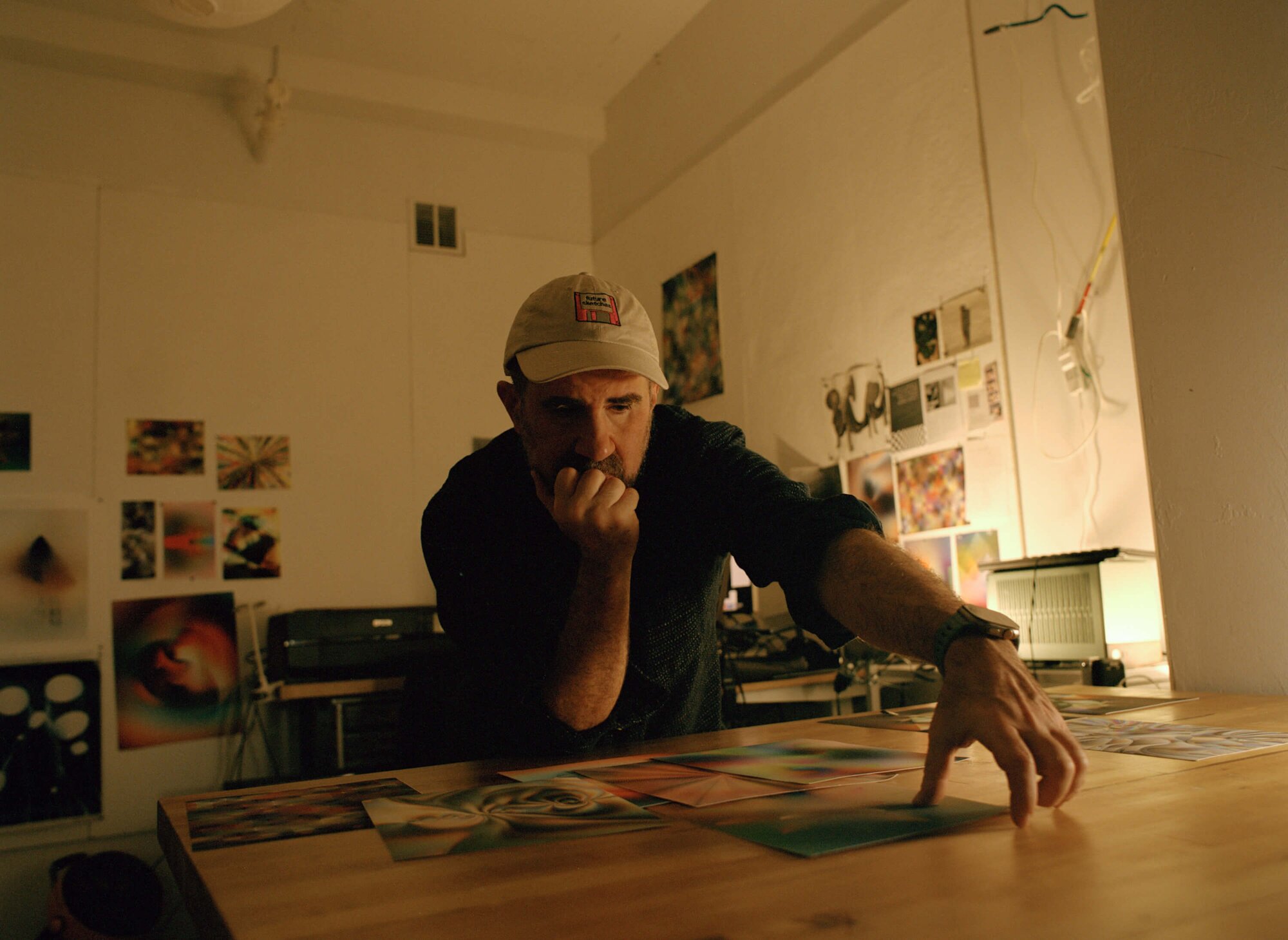
Zach Lieberman
Zach Lieberman has spent over two decades exploring what happens when code becomes a creative medium. As the co-creator of openFrameworks and head of the Future Sketches group at MIT Media Lab, Lieberman has helped define the field of creative coding while maintaining a daily sketching practice that has spanned nearly a decade. His work oscillates between the deeply technical and profoundly human, finding beauty in algorithmic accidents and exploring the expressive potential of code.
Interviewed by Justin Maller, Head of Curation at Layer.
You began in printmaking and sculpture before coding became your primary medium. What philosophical shifts accompanied that transition from tangible to generative?
I started in fine arts, and everything was very physical. It was about the materials. You were going to the art supply store and touching everything. The way you learned was through your hands.
I had to get a job, and at that time everybody was talking about web design and Y2K. It reminds me of the period we're in now where everybody is talking about AI because something's on the horizon. All my friends were getting jobs as web designers, and I kind of stumbled into a web design position myself and discovered Flash, a tool for doing animation that really profoundly changed my life.
When I was learning Flash, I was learning about connecting a different part of my brain, the math and logic part, to the visual part, which was already developed. I was going to galleries, seeing shows, absorbing art, and thinking about images that were important to me. But the cool thing I noticed in the early days was that a lot of people in the Flash community were so generous, sharing code, sharing resources, sharing tips, and it reminded me of the vibe of the printmaking studio, where everybody was really generous with their time. You would be bunched around a printing press and somebody's pulling the print and somebody's lifting the paper up and everybody's looking. It was very social, and art making felt like something that was not a solitary experience.
When I found these open source communities, people making and sharing with code, I really felt a direct relationship to the feelings I had in the printmaking studio and that really inspired me.
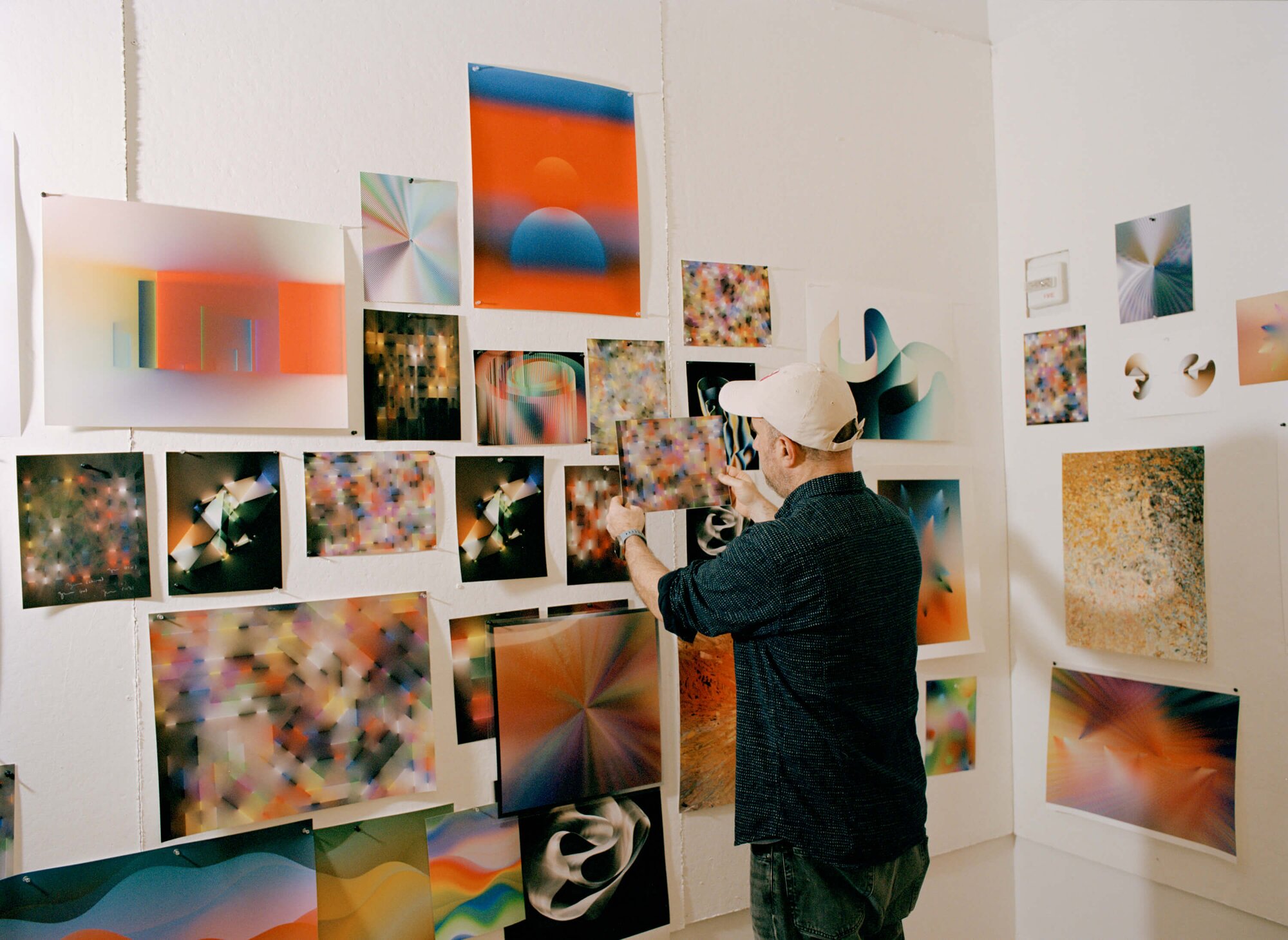
That generosity seems directly connected to your creation of OpenFrameworks.
OpenFrameworks was really about sharing with my students. These were the really early days of creative coding and even Processing didn't exist. It was a transition in computing. Prior to 2000, if you wanted to do computer graphics, you were using SGI computers and very esoteric graphics cards.
I was using tools that weren't open source at the time, but I was making really cool work, and I wanted to share it with my students. OpenFrameworks was created as a tool for me, more than the wider public. I would go every summer and work on projects, and I wanted to come back to school and teach the students how to do the things I was doing, and openFrameworks allowed for that.
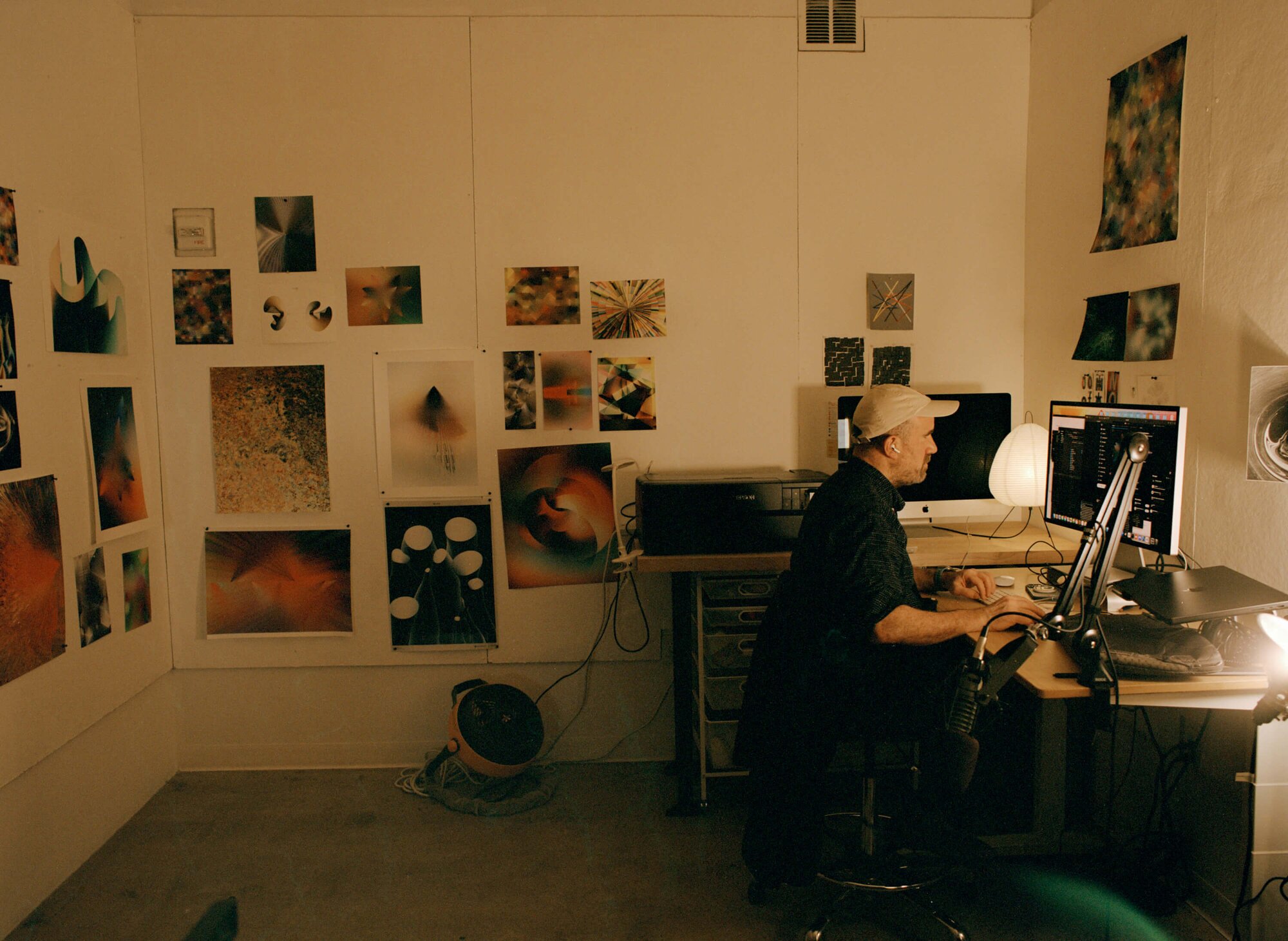
One of your guiding insights is that sometimes the most beautiful work comes from the broken edges of your system. How do you hold space for that brokenness?
This is artwork of math. We’re trying to find beauty in math, numbers, and algorithms. People think of coding like writing lines and lines of code, but so much of the way this artwork works is through adjusting. It’s an artwork of adjustment. You’re sitting there with the screen adjusting things, noodling. You love it.
The cool thing about that adjusting is you’re having a conversation with a system, with numbers. Those numbers have relationships to each other – sometimes linear, sometimes nonlinear. They can lead to really unexpected outcomes. You build a system and have no idea about all the different possibilities. You've created an algorithm. It can’t make every image, but it can make millions and millions of images. It’s hard to understand what the boundaries are.
It’s through that relentless playing, relentless tweaking, relentless experimentation where you try to find the edges of things. Oftentimes it's those edges where you're thinking, “This is fucked up, this is broken. Should I post it? I don't know.” But you have to see something you haven't seen before.
In my practice, I like to try to go to volume knob 11 and then dial it back. When I have something working, let me try 10 points, 100 points, 1,000 points, 10,000 points – just try to break it and then slowly dial it back and add control. Going to the extremes teaches you what the essence of something is. Sometimes I break it in order to understand what the essence is that remains, then focus on that.
People think of coding like writing lines and lines of code, but so much of the way this artwork works is through adjusting. It’s an artwork of adjustment. You’re sitting there with the screen adjusting things, noodling. You love it.
Do you ever decide that a system or essence has been fully explored?
Never. It’s very important to me that I feel the freedom to go back to anything with a fresh pair of eyes. For example, I make blob shapes. I love blob shapes. They’re one of the first things I was doing when I started daily sketching. They’re organic and fun and playful, something that brings me a lot of joy. But I’ve gone back to it year after year and found new things because I’m a different person and my eyes are different and what I’m interested in is different, what I’m feeling is different. There’s always something to find and saying something is done feels really limiting.
There are times where I’ve felt like I’ve really explored a topic and get oversaturated. I did a lot of experiments with augmented reality. I love it, made apps, messed around, had fun, and did commercial work, but I don’t do a lot of AR sketching now because it’s a hassle. I have to get my iPad out or compile stuff for my phone. But that doesn’t mean I’ve precluded myself or said I’m done with AR. I allow myself to explore it to a point where I felt really happy, then I get bored. That boredom is so important for discovering new things.
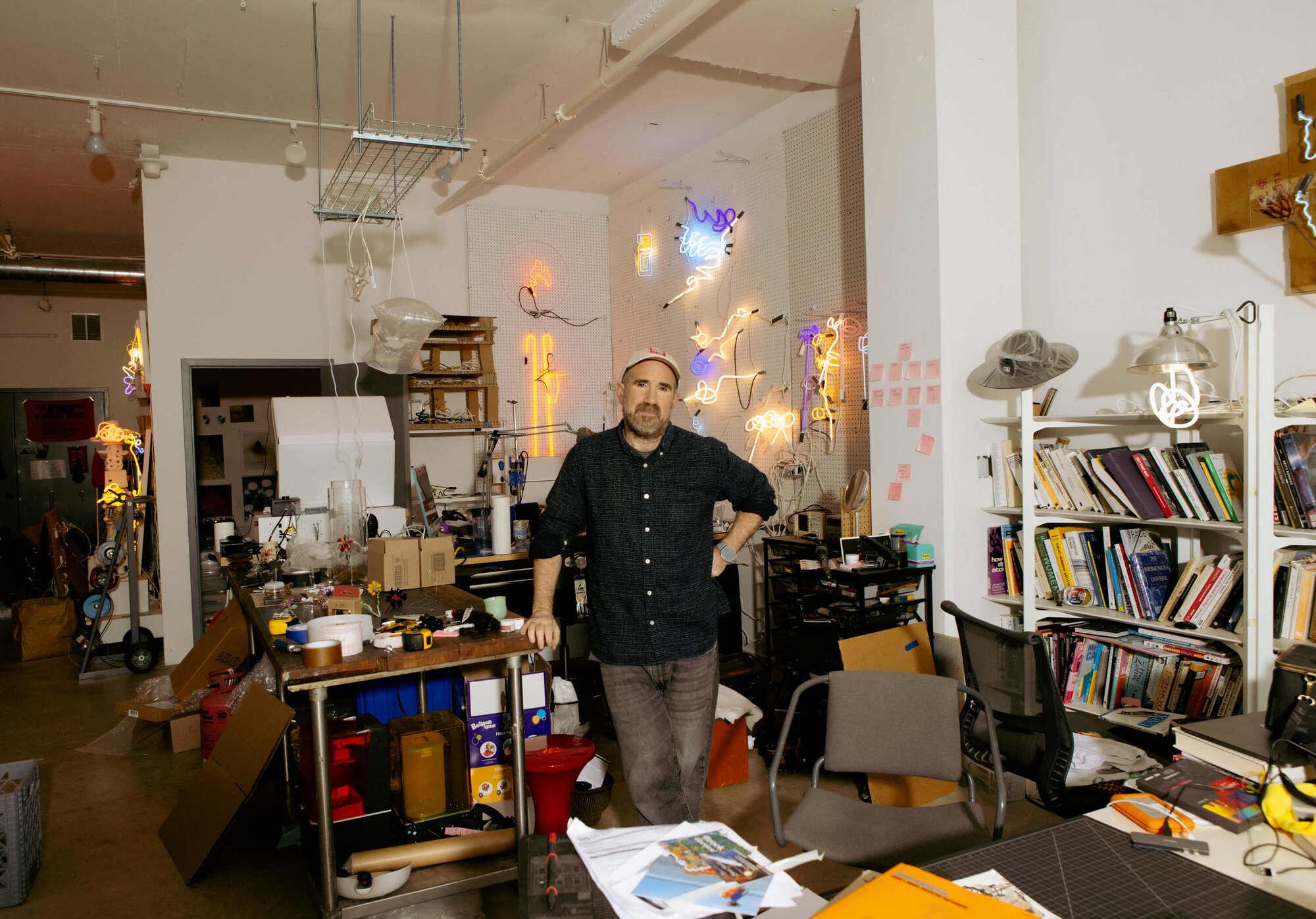
What is Future Sketches investigating at the MIT Media Lab, and what excites you most about that research?
Future Sketches is a research group looking at what tools artists and designers will be using in the future, specifically building artifacts and tools at the same time. A lot of it is around open source creative coding. One PhD student is making a brand new programming language for creative coding.
There’s experimentation around how we see an algorithm, how we see all the different possible outputs of an algorithm, or how an algorithm can be expressed through material objects. My students are doing crazy things. One bought a computer-controlled knitting machine from the 80s on eBay, got it to work again, and now she’s doing knitted animation. She does knitted garments where she uses the shape of the garment to inform the computational system she’s knitting.
My students are extreme weirdos in the best way. That's what I look for when I recruit students. I’m looking for students that are curious, work openly, and are making extremely weird things. The most exciting thing is coming in every week and my students are talking about what algorithms they’re excited about, what papers they’re working on, what conferences they’re going to, or workshops they’re designing. When I think of a research group, it’s the kind of place where people are sharing work in progress, sharing papers, sharing resources.
How do you approach color in your work?
People ask me all the time: how do you work with color? There are different ways – you can have palettes, you can have algorithmic ways, you can find inspiration from nature, and think about sketching in code the same way you might think of sketching in a notebook.
If you’re sketching on paper, there’s a feedback loop between you making a drawing and seeing the world. The way you see informs the drawing, the way you draw informs your seeing. I feel the same way with sketching.
Certain colors make me feel different things. I’ve been thinking a lot about red, for example. If I have red in an artwork, I need the red to be super red. I need it to be blood or something. I get very attached to colors and they represent different things to me, different feelings.
When students ask for advice about color, it boils down to something very essential: color to me is about feeling. Making artwork generally is about feeling. I try to make work that makes me feel something and share it with others so potentially they can feel something. Everything starts with my feeling. I oftentimes try to make work that makes me feel like my favorite albums. You put on an album that calms you down or connects you with your past or makes you feel a certain mood. It's like a key that unlocks something. When you’re creating visual work, color can oftentimes be that key that can unlock something. It's so much driven by feeling.
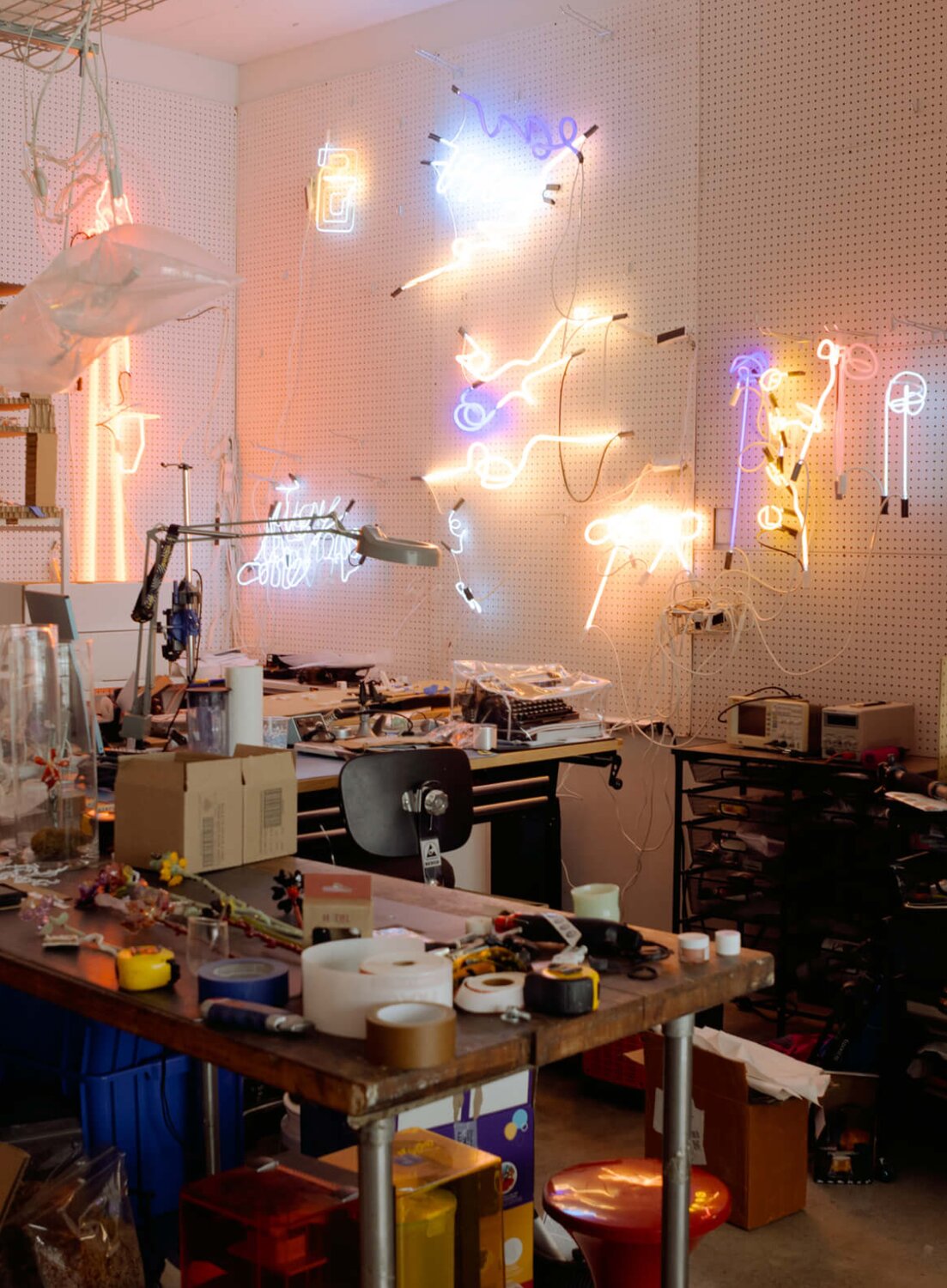
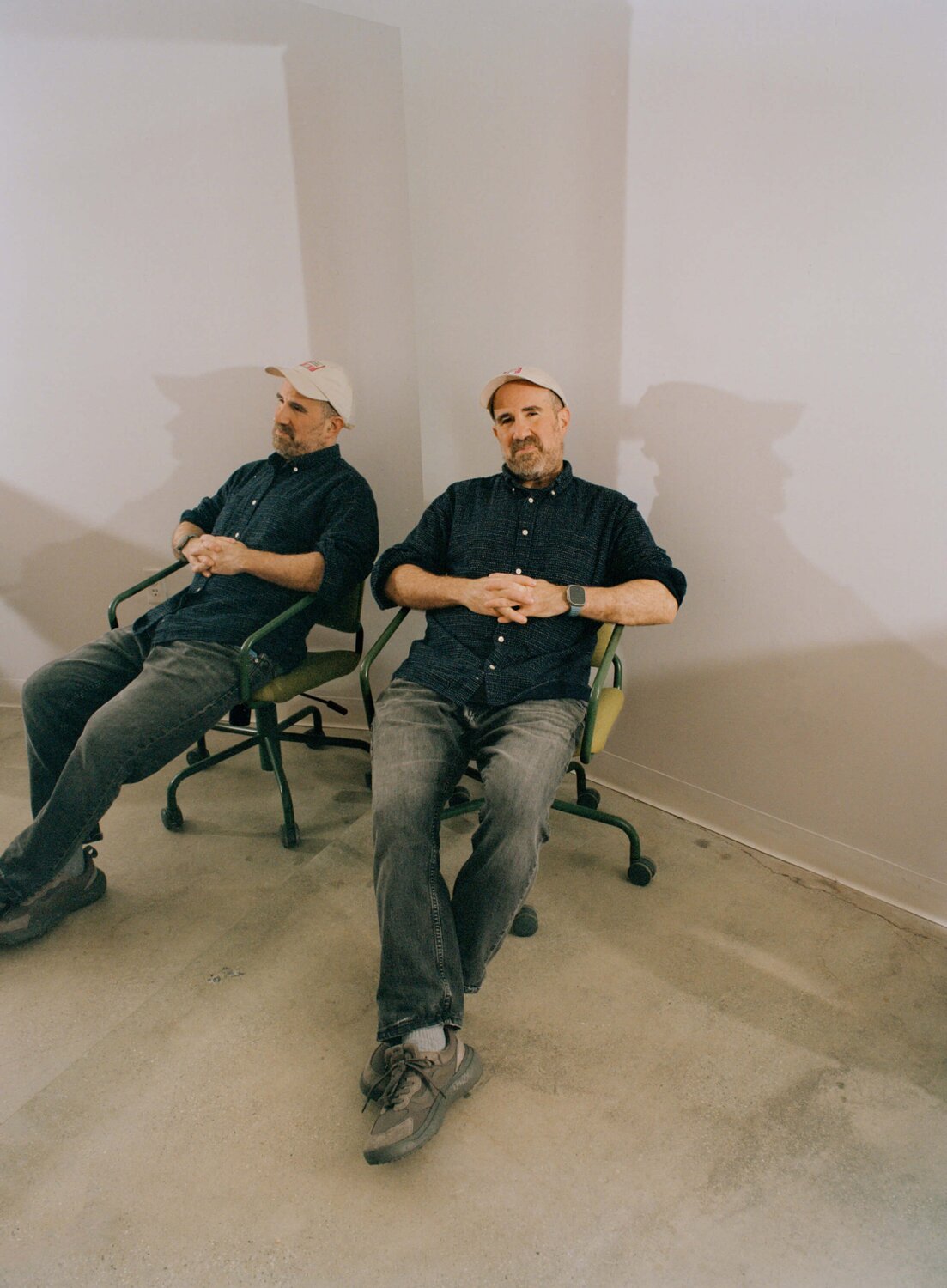
Can you share a pivotal moment in your life that significantly impacted your artistic journey?
My father, who passed away 10 years ago, was a professional storyteller. He went around the country telling stories. When I was young, I wanted my parents to have normal jobs. I was like, “God, why can’t you be a lawyer or a doctor?” My dad’s a storyteller, my mom’s a Lamaze teacher. It was really different.
But there was something that really inspired me: in his middle age, my dad discovered a new career. He was an English teacher, and taught at the local high school. He took a workshop about storytelling and fell in love. I saw him start from nothing, and begin by telling stories at the local library and then moving to festivals. He went on to travel around the world, getting commissioned for projects like writing for Jet Propulsion Laboratory (JPL) and Mars Rover and touring science museums. I saw him really build a career out of what he loved and that’s always been really inspiring.
The reason I do daily sketching relates to my father. I was in France for work when I got the news about my father’s death. I wasn’t on social media then and I had to join Facebook to stay connected with family, and that’s when I discovered Instagram.
I had a tradition where I would always make animated New Year’s cards. I started on that first day and just kept going: January 1st, January 2nd, January 3rd. It felt like Instagram was such a cool place to make tiny animations. There was a 15-second limit, which was perfect -- two loops.
I feel sad that my dad couldn’t see that progression, but my mom is around and she’s seen the progression. The end of this year will mark 10 years of daily sketching.
Looking back, do you think of your career as cumulative system building towards something, or as discrete experiments along an unfolding path?
I have this model of sailing. You can’t always go in the direction you want to go, so you wind up tacking in different directions. I’m not a sailor, but I’ve been on sailing boats. It’s like: “Okay, we go this way, then we go that way, then we tack back.” The wind is pushing in one direction, and the sailboat’s going in another. You get to where you want to go through all these interesting zigzags. A lot of a career is like that. Big zigs and tiny zigs, but always shaped by different forces, different winds, different currents. In the end, you try to find a way to sail with all that, in the direction you want to go.
There are also timescales you simply can’t understand when you’re starting out. I didn’t realize that your career and the things you work on might shift dramatically every five or ten years. For example, doing something like OpenFrameworks connected me to amazing people around the world and opened up all kinds of unexpected opportunities. It kickstarted my career. It’s like you’re always planting seeds, and they grow in ways that are surprising and beautiful.
I didn’t realize that your career and the things you work on might shift dramatically every five or ten years. [...] It’s like you’re always planting seeds, and they grow in ways that are surprising and beautiful.
I had this experience at a conference where I mentioned that on the first day of class, I tell my students: “I adopt you.” Afterward, a guy came up to me and said, “Ten years ago, you taught a workshop in Brazil. I don’t remember what you looked like, but I remember you said that phrase. That workshop got me into coding, and now I work on startups and tech on the West Coast.”
I don’t remember much about that workshop, just that it was hot and there were mosquitoes. But that story reminded me: the things you say, the things you do, the kind of energy you put into the world, they come back to you in ways you can’t predict, on timescales you don't control. Someone might return ten years later to tell you something you said changed the course of their life.
There’s something about timescale that’s really hard to appreciate when you’re beginning. But over time, you start to understand that influence and meaning often unfold in the long arc. You zigzag, you adapt to the wind, you plant seeds, and you keep sailing.